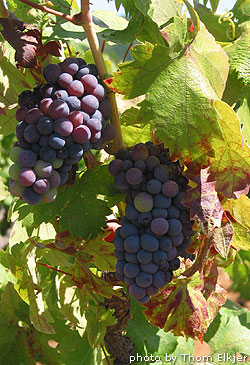Some philosophers attribute this to God's wrath for our first parents' choice of eating forbidden fruit.

Others might call this the harsh reality of a universe without plan or purpose.

Other hybrids of these extremes exist.
But that is neither here nor there to this blog. What we want to know is the how of death, on a molecular level. This may sound like chest-pounding propaganda, but my first exposé will be about the set of molecules that interested me during my Ph.D. studies.
Browsing the most recent contents of Nature, Science, and Cell, I realized that a new discovery has been made in that field. Call it coincidental, but I am back in my old stomping grounds, reading about my former favorite molecule, Phosphoinositide 3-Kinase.
So what is PI3K, and why should you care?
Like all kinases, PI3K's job is to add a phosphate molecule to some other molecule. As the name implies, PI3K puts a phosphate on the number 3 position of phosphoinositides.
What is a phosphoinositide, and why should you care?
It's a lipid--think about grease; no, not that tawdry musical with John Travolta, or McDonald's. We're talking about cells here, and lipids are found predominantly in the membranes of cells.
Ok--so phosphate molecules are being placed on lipids that are on the membranes of cells. Why should you care?
Physically speaking, YOU don't care, but some molecules do. For, you see, phosphate molecules are highly charged, and you know what people say about true love. Just as the air can be charged with romance, a phosphate's charge can attract new "mates" to the membrane of a cell. What does that do, and why should you care?
This photo is out of date, but I drew it for a publication, and I can't resist including it here. In this circumstances, PI3K is composed of two subunits, labeled as p85 and p110. But you should get the picture---many molecules are drawn to the membrane for a molecular conversation. Overall, that conversation has a pretty uniform message--grow, reproduce, and SURVIVE!

In this case, T cells receive messages through their receptors for foreign molecules, and one chief carrier pigeon is our friend, Phosphoinositide 3-Kinase, which makes those little plus signs (that signify the phosphorylated lipids), which starts the conversation between many molecules whose names are immaterial to this discussion. But again, the message is important---cells are told to grow, divide, and survive.
Now, if we think about what is so bad about growing, reproducing and surviving, our thoughts may turn to apocalyptic fears of the world's sustainability, but again, we are talking about cells and organisms.
The real problem behind too much growth and reproduction on an organismal level is, of course, cancer.
That word, which may be more stigma than understanding to some of my readers, is simply uncontrolled growth of cells. As scientists began looking for mutations in genes that were common to cancer patients, it was a beautiful but tragic fact that molecules related to PI3K were often found to be the culprits at hand in many instances of cancer. This image shows a breast cancer cell-dividing rapidly, which in this particular cancer, has over a 50% chance of being mutated in the PI3K pathway.

In my next installment, I will try to explain what the new findings are, and why they are interesting.
Hopefully this introduction will be enough to chew on for now. But the method to the madness is hopefully clear now.
Until then, I remain as always, your obedient servant.










No comments:
Post a Comment